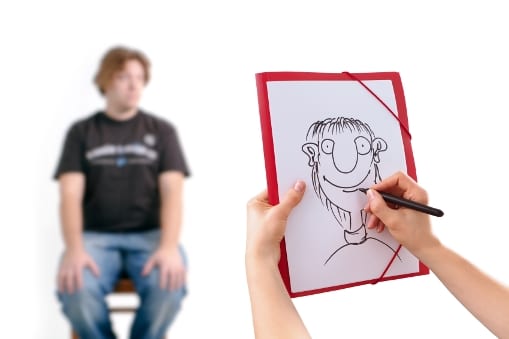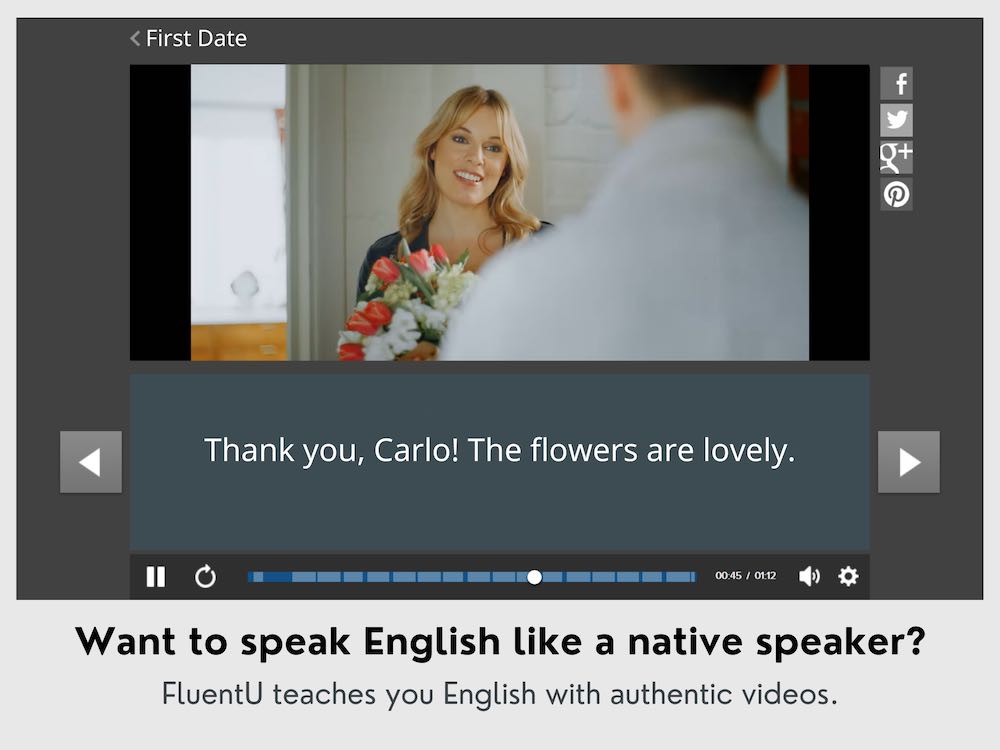
How To Describe a Person in English: 154 Common Vocabulary Terms
Even native speakers sometimes find it hard to talk about themselves in English.
Whether you’re describing yourself or someone else, knowing common 150+ words used to describe a person can be a big help.
Contents
- What Are the Different Ways to Describe People?
- 1. Describing Someone’s Appearance
- 2. Describing Someone’s Mannerisms
- 3. Describing Someone’s Character
- 4. Describing Someone’s Feelings
- Why Learn How to Describe a Person?
- The Importance of Being Polite When Describing a Person
- And One More Thing...
Download: This blog post is available as a convenient and portable PDF that you can take anywhere. Click here to get a copy. (Download)
What Are the Different Ways to Describe People?
Let’s say you want to describe a friend, a family member or a boss. You will probably use a few kinds of information.
- Appearance is what someone looks like on the outside.
- Mannerisms are the ways that someone acts or behaves.
- Character traits are the little things that make someone who they are. In other words, they make up someone’s personality.
- Emotions are what someone feels at a certain time.
In this post, we’ll go over useful vocabulary for describing all of these.
You will see this vocabulary used a lot in conversations and online.
1. Describing Someone’s Appearance
To describe someone’s appearance, you will often use adjectives. An adjective is a kind of word that describes a noun (a person, place or thing).
Here are some words and phrases you can use to describe a person’s appearance.
Some of them are synonyms, or words that mean almost or exactly the same thing.
Knowing more than one way of saying something is very helpful when describing people.
Describing a face
Face Eyes Nose Eyebrows
round
hooded
humped
shaggy
oval
round
pointed
thin
square
almond-shaped
sharp
plucked
triangle
deep set
straight
arched
long
close set
snub
soft arch
freckled
wide set
aquiline
high arch
rosy
turned up
thick
puffy
crooked
upwards
Hair Texture Hair Color Hair Length Facial Hair
straight
blonde
short-haired
has a beard
wavy
dark-haired
long-haired
has a moustache
curly
red-haired
bald
(no hair) has a goatee
frizzy
Describing a body
Weight Height
well-built
tall
full-bodied
short
curvy
petite
heavy
pint-sized
overweight
thin
slim
skinny
Shoulders Legs Arms
broad
shapely
beefy
delicate
thick
powerful
sloping
feminine
muscular
narrow
scrawny
skinny
rounded
sinewy
toned
well-defined
athletic
ripped
strong
crooked
slender
bulky
sleek
thick
Overall Appearance Style of Dress
good-looking
well-dressed
attractive
stylish
beautiful
trendy
pretty
unfashionable
gorgeous
frumpy
handsome
plain-looking
not much to look at
2. Describing Someone’s Mannerisms
Someone’s mannerisms are the way they act or speak. When you speak, do you move your arms a lot?
Do you touch your hair or bite your lip? All these things are mannerisms.
Since mannerisms are usually actions, they are often described by phrases with verbs (action words).
You can add the person’s name or a pronoun before it (he, she, they…).
For example, “He taps his fingers.”
Here are some common mannerisms you might use to describe people.
FluentU takes authentic videos—like music videos, movie trailers, news and inspiring talks—and turns them into personalized language learning lessons.
You can try FluentU for free for 2 weeks. Check out the website or download the iOS app or Android app.
P.S. Click here to take advantage of our current sale! (Expires at the end of this month.)

3. Describing Someone’s Character
A person’s character is their personality, who they are on the inside.
When you talk about someone, you might mention what they are like as a person.
Here are some ways to do that.
Friendly
Mean
Respectful
Disrespectful
nice
unpleasant
polite
rude
kind
nasty
well-mannered
impolite
pleasant
vicious
considerate
vulgar
warm
cruel
thoughtful
obscene
Smart
Not Smart
Gets Upset Easily
Relaxed
clever
dense
hot-headed
calm
intelligent
dumb
hot-tempered
laid-back
sharp
stupid
moody
easy-going
wise
not too bright
temperamental
carefree
Extroverted
Introverted
Funny
Doesn't Laugh a Lot
outgoing
quiet
hilarious
serious
sociable
soft-spoken
witty
reserved
approachable
shy
silly
boring
Tries Big Things
Arrogant
Modest
ambitious
conceited
humble
determined
stuck up
unpretentious
goal-oriented
self-absorbed
unassuming
resourceful
4. Describing Someone’s Feelings
People’s feelings are always changing. You can be happy one moment, and then hear some bad news and become sad.
You always know how you feel, but it isn’t always easy to tell how someone else is feeling.
You can look at how someone is speaking or even how they’re sitting to understand how they feel.
When you’re not sure how someone feels, you can say they might be feeling something.
You can also say someone looks like they’re feeling a certain way. These phrases show that you might be wrong.
For example, you can say, “I’m mad” when you’re talking about yourself. But you might say “He looks mad,” when you’re talking about another person.
This makes sense if this person is yelling into his phone with his face red and his fists clenched (all signs that someone could be mad!).
You can use these words to talk about how someone is feeling, how they were feeling before or how they might feel in the future.
Happy
Sad
Nervous
Relaxed
elated
unhappy
anxious
calm
exuberant
down
stressed
serene
cheerful
melancholy
agitated
tranquil
delighted
miserable
ecstatic
out of sorts
Tired
Well-rested
Mad
Bored
exhausted
energetic
angry
disinterested
worn out
refreshed
furious
inattentive
fatigued
invigorated
fed up
Why Learn How to Describe a Person?
We describe people all the time. For example, you might tell your friends what your boss is like.
You might tell your sister what that cute guy you saw looks like.
Even outside of everyday conversations, it’s very useful to know how to describe people.
Descriptions are used a lot in books, in articles and in other kinds of communication in English.
Reading or hearing a description of someone can give you a better idea of what they look like or act like.
Descriptions are also useful in the business world, often crucial to conversations and presentations at work.
The Importance of Being Polite When Describing a Person
Some ways of describing people are polite and respectful.
Take the compliments in this video, for example. A native English speaker drives around town saying nice things to people about the way that they look!
Of course, other ways to describe people can be considered rude.
Use judgment and common sense. Think about how you would feel if you heard someone using the same words to describe you.
If you’re ever stuck trying to think of a different way to say a word, look it up in a thesaurus like this one.
A thesaurus lists both synonyms and antonyms (words that have an opposite meaning). It’s a great way to discover new words and more ways of describing people.
Another good thesaurus resource is Visual Thesaurus, which is like a thesaurus that’s also a map. It shows you the connections between related words. This is great for helping you choose the very best adjective to describe someone.
So, how would you describe yourself?
Download: This blog post is available as a convenient and portable PDF that you can take anywhere. Click here to get a copy. (Download)
And One More Thing...
If you like learning English through movies and online media, you should also check out FluentU. FluentU lets you learn English from popular talk shows, catchy music videos and funny commercials, as you can see here:
The FluentU app and website makes it really easy to watch English videos. There are captions that are interactive. That means you can tap on any word to see an image, definition, and useful examples.
For example, when you tap on the word "searching," you see this:
Learn all the vocabulary in any video with quizzes. Swipe left or right to see more examples for the word you’re learning.

FluentU helps you learn fast with useful questions and multiple examples. Learn more.
The best part? FluentU remembers the vocabulary that you’re learning. It gives you extra practice with difficult words—and reminds you when it’s time to review what you’ve learned. You have a truly personalized experience.
Start using the FluentU website on your computer or tablet or, better yet, download the FluentU app from the iTunes or Google Play store. Click here to take advantage of our current sale! (Expires at the end of this month.)















